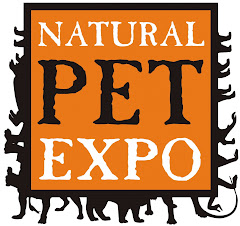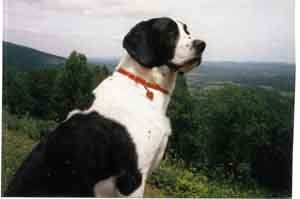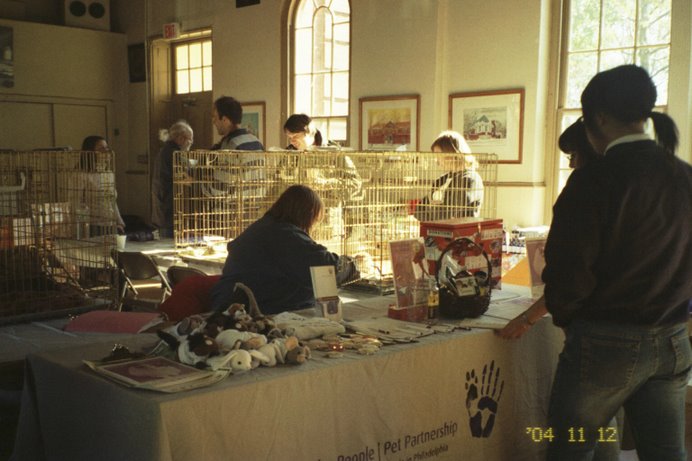
What's Really for Dinner? The Truth About Commercial Pet Food by Tina Perry
Cow brains. Sheep guts. Chicken heads. Road kill. Rancid grain. These are a few of the so-called nutritionally balanced ingredients found in the commercial pet food served to companion animals every day.
More than 95 percent of US companion animals derive their nutritional needs from a single source: processed pet food. When people think of pet food, many envision whole chickens, choice cuts of beef, fresh grains, and all the nutrition that a dog or cat may ever need -- images that pet food manufacturers promote in their advertisements. What these companies do not reveal is that instead of whole chickens they have substituted chicken heads, feet, and intestines. Those choice cuts of beef are really cow brains, tongues, esophagi, fetal tissue dangerously high in hormones, and possibly diseased and even cancerous meat. Those whole grains have had the starch removed for cornstarch powder and the oil extracted for corn oil, or they are hulls and other remnants from the milling process. Grains used that are truly whole have usually been deemed unfit for human consumption because of mold, contaminants, poor quality, or poor handling practices. Pet food is one of the world's most synthetic edible products, containing virtually no whole ingredients.
Pet food manufacturers have become masters at inducing companion animals to eat things cat and dogs would normally spurn. Pet food scientists have learned that it's possible to take a mixture of inedible scraps, fortify it with artificial vitamins and minerals, preserve it so that it can sit on the shelf for more than a year, add dyes to make it attractive, and then extrude it into whimsical shapes that appeal to the human consumer. For this, pet food companies can expect to earn $9 billion in sales in 1996.
Scraps and Byproducts
For years, many caregivers have tried to avoid feeding their companion animals people food leftovers, having been warned by veterinarians about the heath problems they can cause. Yet much scrap material from the human food industry is ending up in dogs and cat’s dinner bowls. What the consumer purchases and what the manufacturer advertises are often two entirely different products, and this difference threatens the animals healthy, especially as they age. Learning to read ingredient labels and taking the time to read them carefully is crucial to making an educated choice when purchasing pet food. Ingredients are listed in descending order of weight (heaviest first) under standards established by the Center for Veterinary Medicine for the Food and Drug Administration (FDA). The name of the product (in most states) is dictated by the regulations of the American Association of Feed Control Officials (AAFCO). The trouble is, AAFCO standards can lead to deceptive product names due to the weight and volume variations between wet and dry ingredients. Also, the average consumer has no idea what the definitions for the listed ingredients mean. Preservatives, vitamins, minerals, flavorings, and cereal make up most of what the companion animal eats.
It is not happenstance that four of the top five major pet food companies in the United States are subsidiaries of major multinational food production companies: Colgate Palmolive (which produces Hills Science Diet), Heinz, Nestle, and Mars (see The Corporate Connection). From a business standpoint, multi-national food companies owning pet food manufacturers is an ideal relationship. The multinationals have captive market in which to dump their waste products, and the pet food manufacturers have a direct source of bulk materials. Both make a profit from selling scraps that originate from places far worse than the dinner table. In his 1986 book Pet Allergies, veterinarian Al Plechner sums up what goes into companion animals' food: Condemned parts and animals rejected for human consumption are routinely rerouted for commercial pet foods. A similar fate applies to so-called 4-D animals. These are food animals picked up dead, or that are dying, diseased, or disabled, and do not meet human-food qualifications. They are processed straightaway for companion animal consumption. Little goes to waste. Says Plechner, food processing refuse of all sorts winds up in your animals' dinner bowls. Moldy grains. Rancid foods. Meat meal. The latter is ground-up slaughterhouse discards often containing disease-ridden tissue and high levels of hormones and pesticides, the very things that may have contributed to the death of the steer or hog. A decade later, his words still apply. When cattle, swine, chickens, lambs, or other animals meet their ends at a slaughterhouse, the choice cuts -- lean muscle tissue and organs prized by humans -- are trimmed away from the carcass for human consumption. Whatever remains of the carcass (bones, blood, pus, intestines, ligaments, subcutaneous fat, hooves, horns, beaks, and any other parts not normally consumed by humans) is, according to the pet food industry, perfectly fit as a protein source for cat and dog food.
The Pet Food Institute, the trade association of pet food manufacturers, acknowledges in its 1994 Fact Sheet the importance of using byproducts in pet foods as additional income for processors and farmers. The purchase and use of these ingredients by the pet food industry not only provides nutritional foods for pets at reasonable costs, but also provides an important source of income to American farmers and processors of meat, poultry, and seafood products for human consumption. Many of these remnants are indigestible and provide a questionable source of nutrition. The amount of nutrition provided by meat byproducts, meals, and digests varies from vat to vat of this animal protein soup. A vat filled with chicken feet, beaks, and viscera is going to make available a lower amount of protein than a vat of breast meat. James Morris and Quinton Rogers, professors with Department of Molecular Biosciences at the University of California at Davis Veterinary School of Medicine, assert that there is virtually no information on the bioavailability of nutrients for companion animals in many of the common dietary ingredients used in pet foods. These ingredients are generally byproducts of the meat, poultry and fishing industries, with the potential for wide variation in nutrient composition. Claims of nutritional adequacy of pet foods based on the current AAFCO nutrient allowances (profiles) do not give assurances of nutritional adequacy and will not until ingredients are analyzed and bioavailability values are incorporated. Meat byproducts, the catchall term of the pet food industry, is a misnomer because these byproducts contain little if any meat. Byproducts contain little if any meat. Byproducts are animal parts leftover after the meat has been stripped from the bone. Chicken byproducts include heads, feet, entrails, lungs, spleens, kidneys, brains, livers, stomachs, noses, blood, and intestines free of their contents. What the pet food manufactures fail to mention is that most byproducts, digests, and meals are also filled with other substances, such as cancerous tissue cut from the carcass, plastic foam packaging containing spoiled meat from supermarkets, ear tags, spoiled slaughterhouse meat, road kill, and pieces of downer animals.
Canned Cannibalism
Another source of meat that isn't mentioned on pet food labels is pet byproducts, the bodies of dogs and cats. In 1990, the San Francisco Chronicle reported that euthanized companion animals were found in pet foods. Although pet food company executives and the National Renderers Association vehemently denied the report, the American Veterinary Medical Association and the FDA confirmed the story. The pets serve a viable purpose by providing foodstuff for the animal feed chain, said Lea McGovern, chief of the FDA's animal feed safety branch. Because of the sheer volume of animals rendered and the similarity in protein content between poultry byproducts and processed dogs and cats, rendering plant workers say it would be impossible for purchasers to know the exact contents of what they buy. In fact, Sacramento Rendering cited by inspectors five times in the past two years for product-labeling violations.
Grease and Grain
The most nutritious dry pet food is no better than the worst if an animal will not eat it. Pet food scientists have discovered that spraying the kibble or pellets with a combination of refined animal fat, lard, kitchen grease, and other oils too rancid or deemed inedible for humans makes an otherwise bland or distasteful product palatable. Animal fat is mainly packing house waste or supermarket trimmings from the packaging of meats. Animals love the taste of this sprayed fat, which also acts as a binding agent to which manufacturers may add other flavor enhancers. The pungent odor wafting from an open bag of pet food is created by this concoction. Restaurant grease has become a major component of feed-grade animal fat over the last 15 years. Often held in 50-gallon drums for weeks or months in extreme temperatures, this grease is usually kelp outside with no regard for its safety or further use. The rancid grease is then picked up by fat blenders who mix the animal and vegetable fats together, stabilize them with powerful antioxidants to prevent further spoilage, and then sell the blended products to pet food companies. Rancid, heavily preserved fats are extremely difficult to digest and can lead to a host of animal health problems, including digestive upsets, diarrhea, gas, and bad breath.
Once considered a filler by the pet food industry, the amount of grain products included in pet food has risen over the last decade as the American population has focused its attention away from consuming beef and toward a healthier diet of grains and vegetables. Commonly two of the top three pet food ingredients are some form of grain products. For instance, Alpo's Beef Flavored Dinner lists ground yellow corn, soybean meal, and poultry byproduct meal as its top three ingredients. 9 Lives Crunchy Meals lists ground yellow corn, corn gluten meal, and poultry byproduct meal as its top three ingredients. Of the top four ingredients of Purina's O.N.E. Dog Formula -- chicken, ground yellow corn, ground wheat, and corn gluten meal -- two are corn-based products from the same source. This is an industry practice known as splitting. When components of the same whole ingredient are listed separately (ground yellow corn and corn gluten meal) it appears that there is less corn than chicken, even when the whole ingredient may weigh more than the chicken.
Soy is another common ingredient in many pet foods. It is used by the manufacturers to boost the claimed protein content and add bulk so that when animals eat a product containing soy they will fell more sated. Tofu is suitable for humans, but most forms of soybean do not agree with a dog or cat's digestive system. Like many other pet food ingredients, soy is virtually unusable by an animal's body. Being obligate carnivores, cats have little ability to digest any nutrients from soy. The problem is worse for dogs because they lack the essential amino acid to digest soy products. Soy has also been linked to bloat and gas in many dogs.
Additives and Processing
Pet food industry critics note that many of the ingredients (such as corn syrup and corn gluten meal) used as humectants to prevent oxidation also bind water molecules in such a way that the food actually sticks to the animal's colon and may cause blockage. Blockage of the colon may cause an increased risk of cancer of the colon or rectum. Two-thirds of the pet food manufactured in the United States contains synthetic preservatives added by the manufacturer. Of the remaining third, 90 percent includes ingredients already stabilized by synthetic preservatives. Because most pet food contains large percentages of added fat, a stabilizer is needed to maintain the quality of the food. Sodium nitrite, often used as a coloring agent, fixative, and preservative, has the ability to combine with natural stomach and food chemicals (secondary amends) to create nitrosamines, powerful cancer-causing agents, according to A Consumer's Dictionary of Food Additives.
Many pet foods advertised as preservative-free do not contain preservatives. Almost all rendered meats have synthetic preservatives added as stabilizer, but manufacturers aren't required to list preservatives they themselves haven't added. Premixed vitamin additives can also contain preservatives. In the 2003 Journal of the American Veterinary Medical Association, veterinarian Philip Roudebush reported finding low concentrations of synthetic antioxidant preservatives in all analyzed samples of products labeled as chemical free or all natural. Other types of additives depend on whether the pet food is semi-moist, dry or canned. Because semi-moist food contains 25-50 percent water, antimicrobial preservatives must be used. Propylene glycol was frequently used in cat food until it was pulled in 1992 for causing a variety of health problems. Processing greatly alters the nutritional value of the food ingredients. Veterinarian R. L. Wysong states in Rationale for Animal Nutrition: Processing is the wild card in nutritional value that is, by and large, simply ignored. Heating, freezing, dehydrating, canning, extruding, pelleting, baking and so forth, are so commonplace that they are simply thought of as synonymous with food itself. Because the ingredients that pet food companies use are not wholesome, and harsh manufacturing practices destroy what little nutritional value the food may have had in the first place, the final product must be fortified with vitamins and minerals.
Questionable Nutrition
How, then, can any pet food be guaranteed to be 100 percent complete or nutritionally adequate? As long as it meets the AFFCO minimum standards, such a guarantee can be on the label. Yet in 1994, feed tests conducted by the New York State Agriculture Department showed 7 percent of all pet foods analyzed failed chemical analyses for guaranteed nutrients. Other states report similar findings, with failure of analyzed feed ranging from to 12 percent. Even if a pet food meets AAFCO standards, certain nutritional requirements (for example, lysine) can vary between species by as much as seven-fold. Although manufacturers clam that millions of companion animals can thrive on a diet consisting of nothing by commercial pet food, research and an increasing number of veterinarians implicate processed pet food as a source of disease or as an exacerbating agent for a number of degenerative diseases. For example, kidney disease is on of the top three killers of companion animals. According to Plechner, the extra protein and harsh ingredients of many pet foods place an overload on the kidneys. Left untreated, the toxic buildup leads to vomiting, loss of appetite, ureic poisoning, and death. Wysong adds, in the last few years, large statistical studies have shown the link between the diet (of processed foods) and a variety of degenerative diseases, including cancer, heart disease, allergies, arthritis, obesity, dental disease, etc. After extensive research, the Animal Protection Institute (API) published a Pet Food Investigative Report to educate companion animal care givers about pet food ingredients, ingredient definitions, labeling, and dietary ailments resulting from processed commercial pet food, including the most commonly know brands. Yet, whether such food is purchased at the supermarket, pet store, or from a veterinarian, it makes little difference in terms of the quality -- only in the cost. Since the report was published earlier this year, API has conducted more research on holistic pet care and pet food alternatives, but still claims that the vast majority of pet foods available on the market today provide less that optimum nutrition for companion animals.
It is sad to think that the food provided by animal caregivers to their four-legged friends could be hazardous to the animals' health and longevity. Caregivers should assume responsibility for providing as healthful a diet as possible for the animals in the care. Consumers should be informed: speak with a holistic practitioner or herbalist, or consult your veterinarian (but be aware that a veterinarian's knowledge of nutrition may be limited to the two weeks of nutrition he or she had veterinary school 20 years ago). Although the ideal solution would be for companion animals to be fed only wholesome homemade and/or vegetarian diets, this is not an optician for everyone -- the cost and time commitment is sometimes prohibitive. By taking more moderate steps, however, caregivers can still greatly improve a companion animal's diet and quality of life.
Tina Perry is an animal advocate with the Animal Protection Institute. Reprinted from The Animals' Agenda Nov/Dec 1996




























